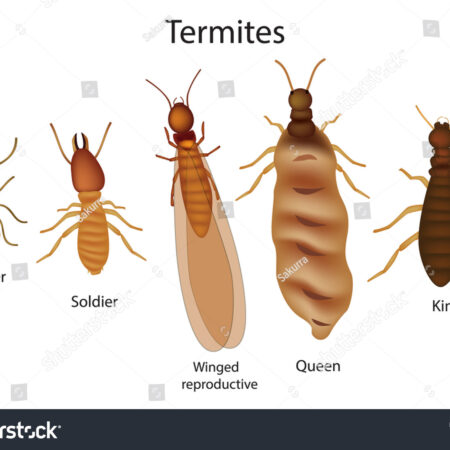Description
20-Hour General Course
Introduction: Our 20-Hour General Course has been designed to satisfy the Texas Structural Pest Control Service’s requirement that Structural Apprentices obtain 2 hours of training in ten specific topics. This 20-Hour General Course consists of 2 hours of training in each of these 10 specific subject matters. There are two lessons per topic (Parts I and II) with each lesson being the equivalent of one hour of training. Each of the lessons found in our 20-Hour General Course is described below.
Law: Texas Laws and Regulations – Part I: Discusses the role of the Texas Department of Agriculture, Texas Commission on Environmental Quality and Texas Structural Pest Control Service in regulating the use and disposal of pesticides in Texas. The licensing and recertification requirements of individuals using pesticides in the course of their business are addressed and various components of the Texas Pesticide Law, Texas pesticide regulations, state-limited-use pesticides, regulated herbicides, the Texas Structural Pest Control Act, and Texas Solid Waste Disposal Act are discussed.
Law: Federal Pesticide Laws – Part II: In this training module, one will learn about the federal laws that regulate the use of pesticides. This would include the Federal Insecticide, Fungicide and Rodenticide Act (FIFRA), Food, Drug and Cosmetic Act (FDCA), Food Quality Protection Act (FQPA), Occupational Safety and Health Act (OSHA), Hazard Communication Standard (HCS), Resource Conservation and Recovery Act (RCRA), Transportation Safety Act (TSA), Superfund Amendments and Reauthorization Act (SARA Title III), Endangered Species Act (ESA).
Pesticide Safety – Part I: One will learn about the benefits of pesticide use, risks of pesticide use, definition of toxicity, how “toxicity” and “hazard” are not the same thing, pesticide toxicity categories, chronic toxicity, pesticide entry into the body through the skin, mouth, eyes and lungs, applicator safety, training and continuing education, planning for accidents, material safety data sheets (MSDSs), and pesticide labels.
Pesticide Safety – Part II: The benefits and limitations of personal protective equipment including gloves, bodywear, head protection, footwear, eye protection, respiratory equipment and barrier creams are discussed.
Pesticide Formulations – Part I: There are many different types of dry and liquid pesticide formulations found on the market today. This chapter discusses the advantages and disadvantages of a great many of these.
Pesticide Modes of Action – Part II: Some of the more common chemical groups that are used as insecticides, fungicides and for the chemical control of vertebrate pests are discussed. Specifically, their modes of action and some of examples of pesticides belonging to a specific chemical group are presented.
Pesticide Emergencies, Spills and Misapplications – Part I: The actions to take in the event of a pesticide leak, spill, misapplication or fire are presented and the requirements of the Community Right-to-Know Act are discussed.
Emergency Procedures – Part II: The actions to take and first aid to administer in the event of a pesticide exposure on one’s skin, clothing or in one’s eyes is discussed, and the first aid to administer in the event a person inhales or swallows a pesticide is presented.
IPM: Nonchemical Pest Control Techniques – Part I: Integrated pest management is an approach to pest management that employs multiple tactics to prevent pest problems, suppress pest populations and minimize the use of pesticides. In this training module, one will learn the reasons to practice IPM, the basic steps of an IPM program and the type of actions one can take to prevent or manage an existing pest problem with the hope of reducing the use of chemicals.
IPM: Nonchemical Pest Control Techniques – Part II: Wildlife Control. This chapter discusses the nonchemical pest control techniques that can be used for the control of wildlife.
Recognition of Pests and Pest Damage – Part I: A pest is any living organism that is present where it is not wanted is a pest. This chapter begins by laying out the general parameters of pest nomenclature, how scientists have categorized the living world and the basics of insect morphology and metamorphosis. Characteristics of centipedes and millipedes, crustaceans, arachnids, slugs and snails are discussed. Different kinds of plant pathogens, weeds and vertebrate pests are presented.
Recognition of Pests and Pest Damage – Part II: Insect Pests of Ornamentals. Descriptions of a large variety of ornamental plant pests and the types of damage they cause are presented. This would include aphids, scale, mealybugs, whiteflies, lace bugs, thrips, spider mites, loopers, cankerworms, walnut caterpillar, bagworm, leaf rollers, leaf tiers, leaf crumplers, tent caterpillars, fall webworm, Elm leaf beetles and leaf miners.
Pesticide Label Comprehension – Part I: Pesticide labels are legal documents that must be followed – they are the law. In this chapter, it explains when a pesticide label should be read and the basic facts one can learn from reading a pesticide label. Situations when deviations from the label are permitted is also presented.
The Pesticide Label – Part II: In this chapter, we progress from talking about the components found within a typical pesticide label to learning how to identify these components within an actual label. For this purpose, we will examine the label for the pesticide product Maxforce® PROFESSIONAL INSECT CONTROL® GRANULAR INSECT BAIT.
Environmental Protection – Part I: The characteristics of vapor drift and particle drift and ways to minimize drift are presented at the beginning of this chapter. Later in the chapter, pesticide adsorption to the soil, volatilization into the air, runoff and leaching are discussed and a list of steps that can be followed to minimize the chance of pesticides reaching groundwater is presented.
Environmental Protection – Part II: This chapter briefly discusses the risks pesticide use poses to wildlife and honeybees, and what can be done to minimize their impact. It then moves on to discussing pesticide persistence and breakdown, how pesticides accumulate within the food chain, pest resistance to pesticides and what pesticide applicators can do to protect the environment.
Application Equipment and Techniques – Part I: This training module presents the advantages and disadvantages of the different kinds of equipment used to apply dry and liquid pesticide formulations. It then moves on discuss the different types of pumps used on pesticide sprayers and the advantages and disadvantages of each of these. Lastly, the different kinds of materials used to make sprayer nozzles and nozzle types are discussed.
Application Equipment and Techniques – Part II: This chapter covers some of the techniques that can be used to (1) minimize the amount of pesticide used; (2) increase the effectiveness of that applied; (3) increase the chance that a pesticide will reach its intended target; or (4) decrease the chance that a pesticide will injure a nontarget organism.
Basic Principles of Math and Chemistry – Part I: This chapter seeks to equip the pesticide applicator with a good understanding of the different mathematical calculations useful in determining the size of an area and the amount required to complete a job. The latter part of this chapter discusses the importance of chemistry in our lives and then defines for the pesticide applicator a large number of terms commonly used when describing chemicals and some of the reactions that might result from their use.
Basic Principles of Toxicology and Entomology – Part II: This chapter starts off by defining toxicology. It then addresses topics such as toxicity differences between animal species, pesticide metabolism within cells, pesticide storage in the body, excretion and elimination from the body, sensitivity differences within a species. Lastly, basic principles of entomology such as insect morphology, reproduction and metamorphosis are discussed and some insect-like pests are described.
Contact us with any questions and start working towards re-certification!



